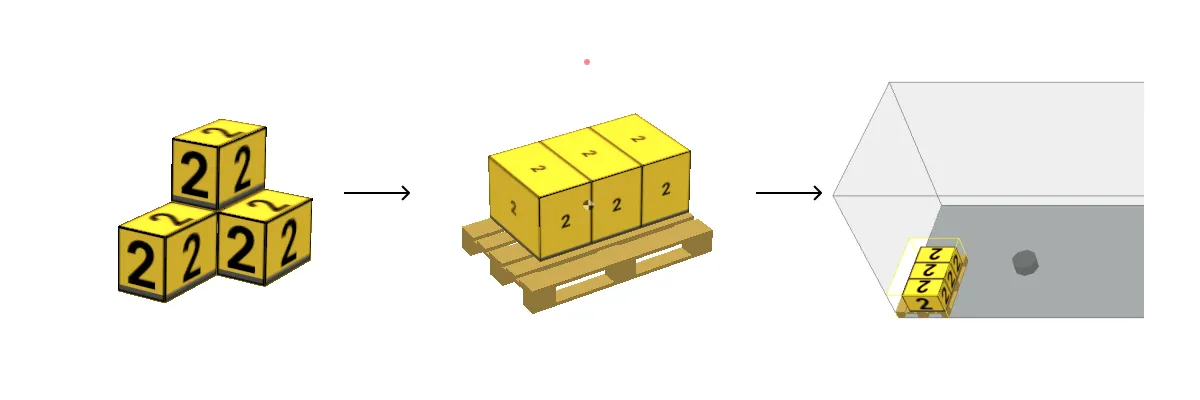Improved pallet build ups for containers and trailers

Anton Gerdes
Software Engineer
Building pallets for loading in containers and trailers has taken a serious step forward, with the release of our new palletization algorithm. Let’s take a deeper look at the nuances to understand the improved efficiency.
After a few months of R&D we are proud to announce the release of our new palletization algorithm: Preloader 2.0. Specifically built for pre-loading cargo onto pallets before loading them into trailers or containers, it is capable of getting the finer details right, with a healthy gain in efficiency.

The traditional approach
Previously, pallets were constructed by loading cargo onto them and then placing them into the trailer. This is a straightforward way of palletization, that is similar to how things are done in the real world.

The real-world way of building a pallet
The most obvious drawback of this is the lack of knowledge of the space the pallet is being loaded into. Since that’s the last step, we won’t see if it fits until the build-up is complete. In the image above, this doesn’t present an issue, but if the trailer was almost full, except for some space with half the height of the trailer, we wouldn’t be able to fit a fully loaded pallet. The risk of building a useless pallet that we have to re-create is a risk of wasted work. Wasted work is wasted time, which in turn means less time for real work.
Taking a step away from the real world to get better results
In Preloader 2.0 we have turned the traditional method upside down. We start by placing an empty pallet into the trailer, and build it up from there. Even though this is very impractical as a real-world solution it comes with a lot of benefits. Not only does this ensure that every built pallet will fit in the trailer, but we can also sort out a lot of details regarding restrictions like cargo priorities, grouping consignments and separating shipments into different containers.

The new way of the algorithm
It is, of course, a bit of an exaggeration to claim that this is totally unlike how a real-world pallet loader works, as they can have a visual of where the pallet is supposed to go inside the trailer/container.
The bottom line
With Preloader 2.0, Cargo-Planner can fit more cargo in less space on pallets. With this improvement we have also solved a number of details regarding prioritization and consignments.

Pallets stacking on other goods when feasible, is a simple visualization of one of the improvements